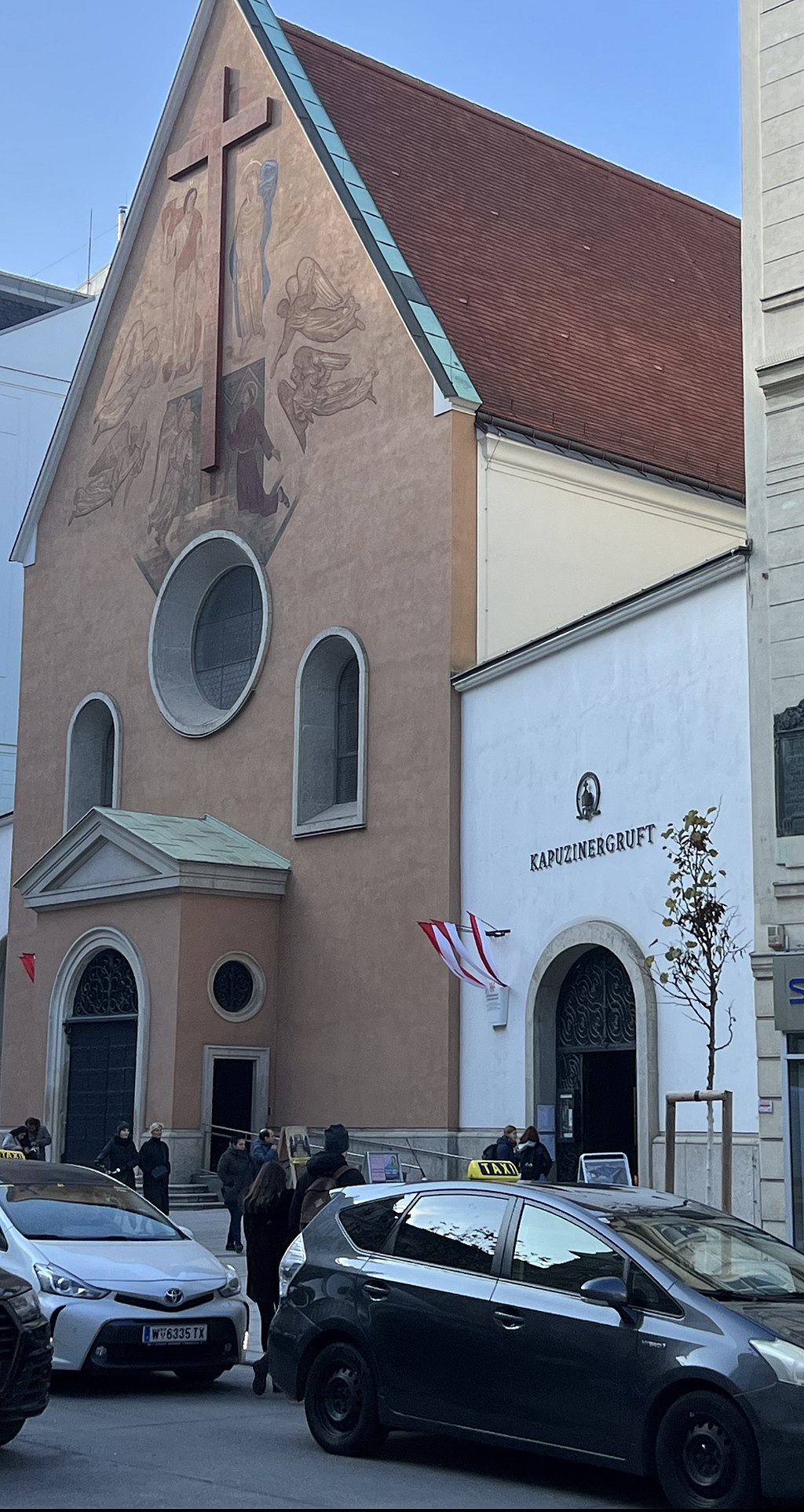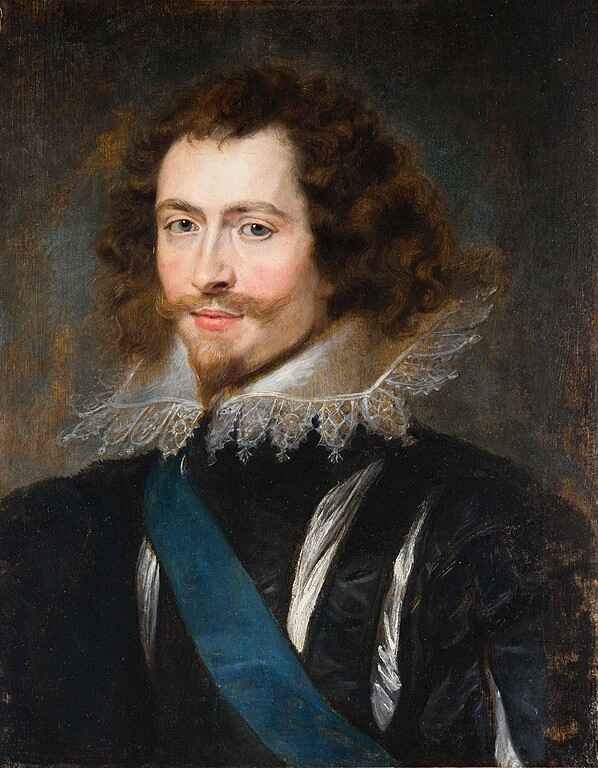Habsburg Imperial Crypt in Vienna
It is under this Capuchin church, the Habsburg Imperial Crypt which houses the tombs of the Habsburgs family. Members of the family have been buried here since 1633. There are 149 Habsburgs, including 12 emperors and 19 empresses and queens have found eternal rest here. The magnificent double tomb of Empress Marie Therese of Autria and her husband, Emperor Francis I of the Holy Empire, is the work of Balthasar Ferdinand Moll.
The last emperor buried here is Emperor Francis Joseph I (1916). The tombs of Empress Elisabeth and Crown Prince Rudolf are also in the Capuchin Crypt. Even today, burials take place in the Imperial Crypt. In 1989 the last Empress of Austria, Zita was buried here. On July 16, 2011, his eldest son, former crown prince and European politician Otto Habsburg, found his last home here alongside his wife Regina. This visit reflects the soul of the Austrian people who respect their history.

Capuchin church and Kapuzinergruft with the entrance to the crypt on the right. Pinterpandai.com, CC BY-SA 3.0, via Wikimedia Commons
The Crypt of the Capuchins in Vienna
In the heart of Vienna and below a very modest-looking church, is the Habsburg pantheon. The church was built in 1622 at the request of Empress Anne, wife of Mattias of Habsburg. It houses in its crypt the bodies of 148 members of the imperial family. Anne devolved this church to the Capuchins who came to Vienna in 1599. Since then, they have been responsible for confessors to members of the imperial family and today it is they who are responsible for guarding their tombs.
The tombs of Matthias and Anne are in a separate chapel at the entrance to the crypt. Since then, the emperors have enlarged the crypt. The first will be Emperor Leopold who will make a first addition, completed by Charles VII. The second will be Marie-Thérère who will have a large additional chapel built. In the 19th century, the François II crypt will expand the crypt and François Joseph will complete it in 1908.
The whole history of Austria is there, through the bodies and tombs of its sovereigns. Starting with that of Leopold I, who suffered the terrible siege of Vienna by the Turks in 1683. It was Lucas Von Hildebrandt, the great Viennese architect, who made his sarcophagus.
Not far from him lie his 3 wives, one of whom, Marguerite Thérèse of Austria, was immortalized as a child by Velázquez in his painting “Las Meninas”. And then, a bronze sarcophagus with fine carvings shelters the body of Ferdinand III, who bought a large part of the paintings by Titian, Veronese or Rubens that can be seen today in the Vienna museum. Finally, the tomb of Charles VI, adorned with frightening and at the same time magnificent baroque skulls, reflects its owner’s taste for the baroque. Indeed, it is he who transforms Vienna thanks to the cooperation of Fischer Von Erlach and in particular the buildings of the Hofburg.
The Capuchin Crypt
The most prestigious crypt is undoubtedly the one that Empress Marie-Therese of Austria had built. Indeed, in the center of a circular chapel, is his prestigious sarcophagus. The latter shelters her body alongside her husband, François de Lorraine is a living example of theatrical baroque. The two spouses, half lying on a large draped bed, look at each other face to face. The staging is strikingly Baroque in grandeur. Moreover, the height of the sarcophagus is impressive. It reflects the prestige of the Empress, the length of her reign and her lineage. In front, the tomb of Joseph II his son is much more sober.
The next crypt houses the tomb of Francis II, who became Francis I of Austria. First grandson of Marie-Thérèse and he had a lot to do against Napoleon. It is he and his minister Metternich who supervise the marriage of Marie Louise with the Emperor of the French. The latter is buried separately in the new crypt. On the other hand, the Duke of Reichstadt, better known as the Aiglon, remained for a long time alongside François I. But Hitler decided to transfer his remains to his father’s side, to the Invalides in Paris.
The tomb of Marie-Louise, next to the tomb of Maximilien de Habsbourg who died in Mexico, assassinated by the revolutionaries. Manet immortalized this execution by remembering Goya’s painting “el tres de mayo”. He thereby castigated the foreign policy of Napoleon III who did not know how to support this emperor whose candidacy he had proposed to pacify Mexico. We placed a Mexican hat and some souvenirs at the foot of the sarcophagus.
Then the next crypt, very prestigious and sober at the same time, hosts three tombs and not the least. Indeed, in the center is the tomb of the great Emperor François-Joseph. To his left is that of his son Rodolphe. The latter died with his mistress in Mayerling in conditions that have still not been elucidated. The other tomb is that of Elisabeth, better known by the nickname of Sissi. Then, further on is the tomb of Zita, the last Empress of Austria. We also placed at the foot of his sarcophagus dried flowers as well as his photo.
At her side a slab mentions the presence of her husband, Charles, but the remains of the latter are in Portugal. On the other hand, her son Otto of Habsburg, the last to enter the crypt, rests not far from her.

Tomb of Franz Joseph I of Austria (middle), flanked by his wife Empress Elisabeth of Austria (left) and son Rudolf, Crown Prince of Austria (right) at the burial place of the Habsburg Empire, Vienna. Pinterpandai.com, CC BY-SA 3.0, via Wikimedia Commons
http://cleverlysmart.com/europe-travel-guide-book-bucket-list-ideas-and-places-to-visit-north-south-east-west/
Sources: PinterPandai, ARGE Straße der Kaiser und Könige, Tourist Info Wien, Vienna Pass
Photo credit: PinterPandai







